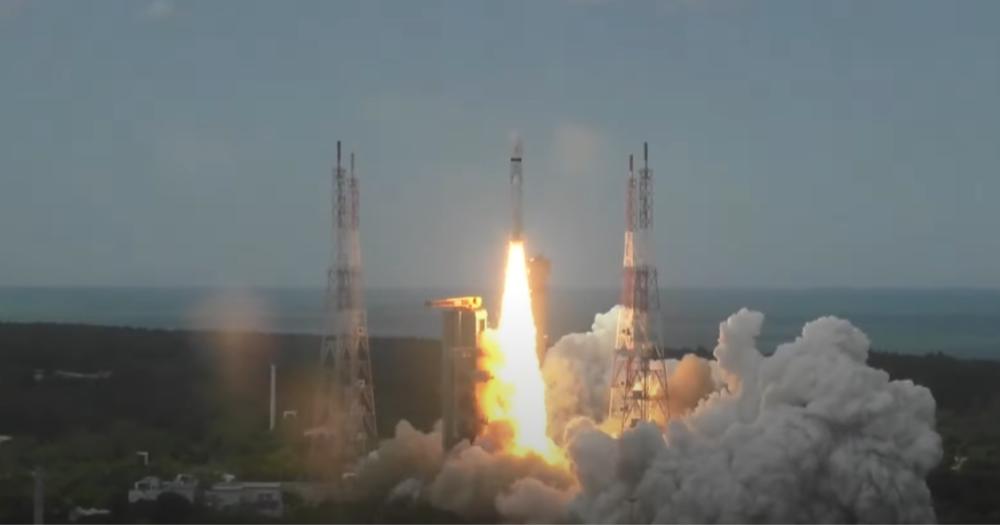The Indian Space Research Organisation, (ISRO) successfully launched the Chandrayaan-3 mission on July 14, with the aim of being the fourth country to successfully conduct a "soft landing" on the moon.
Rock it
The Chandrayaan-3, which means "moon vehicle" in Sanskrit according to Al Jazeera, is planned to orbit the Earth before heading towards the moon.
India today embarked on its historic space journey with the successful launch of Chandrayaan-3.
My heartfelt congratulations to the @ISRO scientists whose tireless pursuit has today propelled India on the path of scripting a remarkable space odyssey for generations to cherish. pic.twitter.com/YPZCHPbZoq
— Amit Shah (@AmitShah) July 14, 2023
It will then attempt to land at the moon's south pole, sometime around August 23.
This is India's third moon mission, with the Chandrayaan-1 mission successfully launching a satellite to the moon's orbit in 2008.
The mission also included a Moon Impact Probe that was intentionally crash landed on the moon on a mission to find water.
The Chandrayaan-2 mission was meant to be India's first moon lander, but the lander crashed.
This would make Chandrayaan-3 its first successful 'soft landing', which means that the landing occurred in a controlled manner, as opposed to Chandrayaan-1's crash landing.
Soft landing
India's effort comes after successful landings by the USSR (precursor to Russia), U.S., and China.
If the Chandrayaan-3 mission succeeds, it would have done so on a relatively small budget of US$75 million (S$99 million), according to Al Jazeera.
This is in contrast to China's Chang'e-1 probe, which cost US$180 million (S$238 million) in 2007, although it managed to land on its first attempt.
Japan's own Kaguya lunar orbiter was slated to have cost US$480 million (S$634 million) in 2020, and did not have a lander.
However its orbiter did managed to send back high resolution pictures of the moon.
The Japanese spacecraft Kaguya captures Earth-rise over the Moon.
— Tech Burrito (@TechBurritoUno) January 12, 2021
Credit: JAXApic.twitter.com/uGF4R2nxDQ
This is yet another showcase of India's space industry, which has previously attempted very impressive feats on relatively small budgets.
In 2013 the ISRO managed to place the Mangalyaan satellite in orbit around Mars for about US$75 million (S$99 million), and successfully maintained it for eight years.
According to the Associated Press, at that time only 56 per cent of such attempts made by the various space agencies around the world had succeeded.
Rocketeers
This focus on space has allowed India to develop a private space industry.
In November 2022, India's first privately developed rocket, the Vikram-S, was successfully launched to a height of 89.5km, the edge of space according to Al Jazeera.
🇮🇳India's 1st-ever private launch of Vikram Suborbital rocket takes place at Satish Dhawan Space Centre, Sriharikota.
— All India Radio News (@airnewsalerts) November 18, 2022
▪️ This mission is milestone in history of ISRO. A non govet entity, Start up Skyroot Aerospace Pvt Ltd had developed the single stage Vikram Suborbital rocket. pic.twitter.com/2F6IkUfGHM
The rocket was launched by space start-up by Hyderabad based Skyroot Aerospace, which received a significant investment from Singapore's GIC.
According to the Times of India, the Singaporean sovereign wealth fund put in US$51 million (S$67 million) for a stake that is just under 25 per cent.
Stories you might be interested in
Top image via ISRO Official/YouTube
If you like what you read, follow us on Facebook, Instagram, Twitter and Telegram to get the latest updates.



